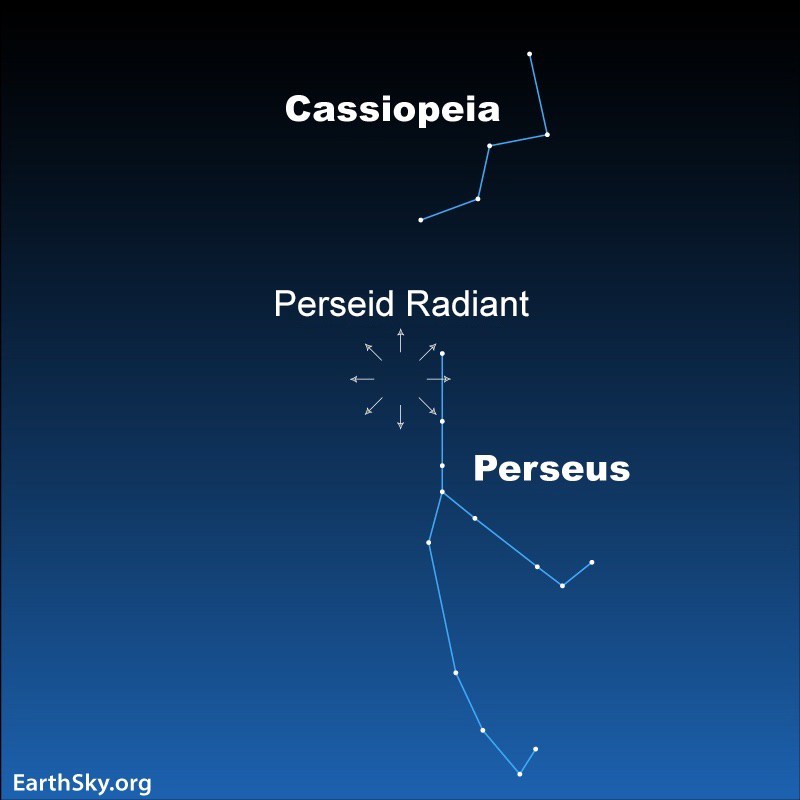The Perseid meteor shower, one of the most dazzling celestial events of the year, reaches its peak on August 12-13, 2025. This annual spectacle promises 50-100 meteors per hour, though moonlight may outshine fainter streaks. The best viewing window is between midnight and dawn when the Perseus constellation climbs highest.
For optimal viewing, escape city lights and allow 30 minutes for eyes to adjust to darkness. While fireballs may pierce through the bright lunar glow, patience will reward skywatchers with nature’s most spectacular summer light show.
- The Perseid meteor shower peaks on August 12-13, 2025, with visibility affected by a nearly full moon.
- Best viewing times occur when the radiant point in Perseus is high in the sky, typically after midnight.
- Expect 50-100 meteors per hour, though moonlight may reduce visibility to only the brightest fireballs.
- The shower results from Earth passing through debris left by comet 109P/Swift-Tuttle, creating dazzling “shooting stars.”
Community Reactions
コメントはまだありません
Perseid Meteor Shower 2025: When Is the Best Time to Watch?
The Perseid meteor shower will peak on the night of August 12-13, 2025, with optimal viewing hours typically between midnight and dawn. This annual celestial event occurs when Earth passes through debris left by Comet Swift-Tuttle, creating up to 60-100 meteors per hour under ideal conditions. However, 2025’s nearly full moon will significantly reduce visibility.






Moon Phase Timeline for 2025 Perseids
| Date | Moon Phase | Visibility Impact |
|---|---|---|
| Aug 11 | Waxing Gibbous (90%) | High interference |
| Aug 12 | Waxing Gibbous (95%) | Maximum interference |
| Aug 13 | Full Moon | Severe interference |
Where to See Perseids Meteor Shower 2025: Best Locations With Least Light Pollution
To maximize your chances despite the bright moonlight, seek Dark Sky Certified locations away from city lights. High elevation areas with clear horizons provide better viewing. Consider these options:
- National parks and remote wilderness areas
- Beaches facing open water
- Mountain tops above inversion layers


How Many Meteors Will You Actually See in 2025 With the Full Moon?
Under perfect conditions, Perseids can produce 100 meteors/hour, but moonlight reduces visibility by 75%. Expect only 15-25 bright meteors/hour during peak – primarily fireballs that outshine lunar interference. The American Meteor Society confirms this reduced rate still offers worthwhile watching.



While challenging, you can photograph Perseids during 2025’s moonlit peak with these techniques:
- Use night mode or manual long exposures (15-30 seconds)
- Stabilize phone on tripod or flat surface
- Set ISO between 1600-3200 (higher creates noise)
- Focus manually on infinity
- Capture multiple shots for stacking


Perseids vs. Other Meteor Showers: Why It’s Still Worth Watching in 2025
Despite the unfavorable moon conditions, Perseids remain superior to most showers because:
- Brighter meteors than average (many reach magnitude -3)
- Higher percentage of dramatic fireballs
- Warmer August nights make viewing comfortable
- More predictable peak than less consistent showers
2025 Perseid Viewing Parties: Where to Watch With Experts
Many astronomy clubs and planetariums host moon-adapted Perseid events featuring:
| Location Type | Special Features |
|---|---|
| Observatories | Telescopes filtered for moon glare |
| Park astronomy events | Red-light guided viewing |
| Virtual watch parties | Live meteor tracking feeds |


When Will the Next Perfect Perseids Show Happen?
After 2025’s lunar interference, mark your calendars for 2028 when peak Perseids coincide with a new moon. The shower cycles through favorable moon conditions every few years:
- 2026: 43% waning crescent (good)
- 2027: 12% waxing crescent (excellent)
- 2028: New moon (perfect)





